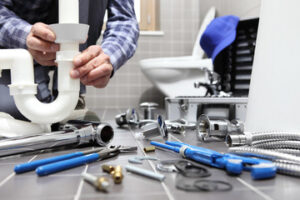Plumber St. Petersburg FL is responsible for installing, maintaining, and repairing plumbing systems in homes and businesses. They also have to be knowledgeable about a wide range of tools and materials. They often work with customers and must be able to communicate effectively.

Plumbing jobs can vary from installing gas lines to resolving drain clogs. They may also need to collaborate with other professionals, such as architects and construction teams, to ensure that plumbing is integrated seamlessly into building projects.
The dripping of water from your sink spout may seem like a minor nuisance, but it can cost you money over time. In fact, leaking faucets waste approximately one trillion gallons of water per year in the United States alone. If you notice your spout is leaking, it’s important to get it fixed quickly. This will help reduce your water bills and also prevent mold and other problems caused by excess moisture.
Plumbers are tradespeople who specialize in installing and maintaining systems used for potable water, hot-water production, sewage and drainage in buildings and homes. They work from blueprints and architectural plans to design and install plumbing infrastructure. They also troubleshoot and repair issues such as leaks, clogs, and system malfunctions. Plumbers are trained to work with a wide variety of tools and materials.
Some of the primary responsibilities of plumbers include laying pipes, setting toilets, and installing kitchen and bath fixtures. They are also responsible for interpreting building codes and regulations to ensure that plumbing systems meet local requirements. In addition, they must be competent at using hand and power tools to perform their jobs.
A career as a plumber can be physically demanding and hazardous to your health. It requires significant manual dexterity and the ability to work in cramped spaces for long periods of time. Plumbers are also exposed to dangerous bacteria and viruses that can be found in faecal matter and sewage.
To avoid the risk of sustaining injuries and illnesses while working as a plumber, you should consider a different career path. Although there are many benefits to becoming a plumber, it is not for those with a fear of germs or who are unwilling to get their hands dirty.
The O-ring is worn
A simple but versatile engineering solution to a highly widespread problem, the o-ring is used in pumps, cylinders and connectors as well as many other components and devices on which modern life relies. The elastomer-based circular shape sits in a groove in two mating hardware pieces and becomes compressed to seal joins and prevent the leakage of fluids and gases.
However, o-rings are susceptible to damage from the working environment as well as other factors. They can be damaged by exposure to excessive temperatures, chemical contamination or vibrations. Depending on the type of o-ring and the working conditions, some are more durable than others.
Abrasion is common in dynamic applications such as rotary, reciprocating and oscillating motions. It is caused by repeated contact with the housing surface and may result in wear lines or deep cuts to the o-ring. Abrasion may also cause a dull or glazed appearance to the o-ring, which can lead to a failure of the seal.
In addition to abrasion, o-rings can be damaged by extrusion, which occurs when the o-ring is forced through the gap between the hardware piece and the mating surface. This can be prevented by using backup devices to reduce clearance gaps, reducing machining tolerances and installing the o-ring with proper dimensions. O-rings should never be stretched or compressed beyond the recommended amount – the inner diameter should only be stretched to a maximum of 5%.
Other damage to o-rings can be caused by installation errors, inappropriate material and improper assembly. A qualified professional can ensure that the o-ring is properly installed and fitted to its application. In addition, they can use a rubber indicator test to determine the o-ring’s material and choose a replacement if necessary. Finally, they can prevent the o-ring from becoming damaged by using a proper lubricant and keeping it clean. They can also try using a higher temperature resistance material if the o-ring is exposed to high levels of friction or vibrations. This will help extend its lifespan.